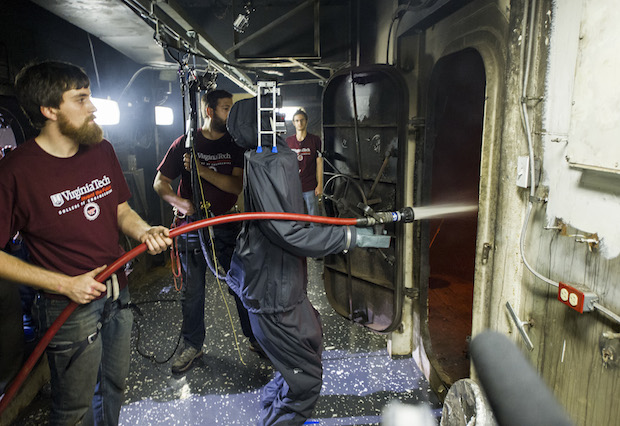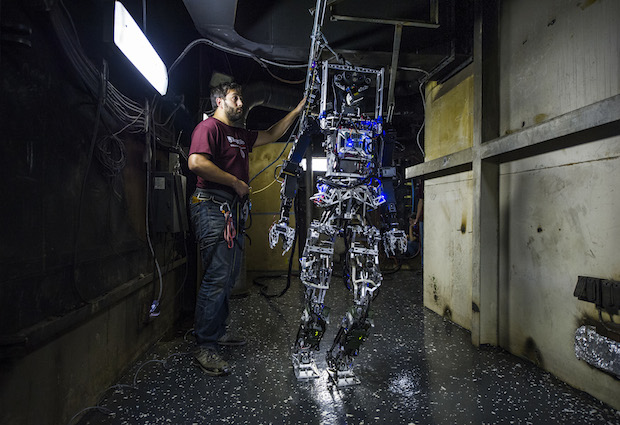Navy testing robot that could fight fires aboard ships
When fires break on a Navy ship, its up to the sailors on board to snuff it out. They don't have the luxury of calling 911.
But soon, they might get some help. Scientists this month unveiled a firefighting robot that one day could be deployed by the Navy and even lend a hand when it responds to natural disasters as it did during the Haiti earthquake in 2010.
The Shipboard Autonomous Firefighting Robot, or SAFFiR, sponsored by the Office of Naval Research (ONR), can walk across uneven floors, use thermal imaging to identify overheated equipment, and even wield a hose to extinguish a small fire. It is part of a larger effort by the military to consider the role of robots in future combat.
"We set out to build and demonstrate a humanoid capable of mobility aboard a ship, manipulating doors and fire hoses, and equipped with sensors to see and navigate through smoke," said Thomas McKenna, ONR's program manager for human-robot interaction and cognitive neuroscience. "The long-term goal is to keep sailors from the danger of direct exposure to fire."
Developed by researchers at Virginia Tech, the two-legged, or bipedal, humanoid robot is also helping the Navy better evaluate what role such devices may play in everything from damage control to inspections aboard ships.
SAFFiR stands 5 feet 10 inches tall and weighs 143 pounds. It has a super-human range of motion to maneuver in complex spaces.
"Balancing on any type of terrain that's unstable -- especially for bipedal robots -- is very difficult," said Brian Lattimer, associate professor for mechanical engineering at Virginia Tech. "Whole-body momentum control allows for the robot to optimize the locations of all of its joints so that it maintains its center of mass on uncertain and unstable surfaces."
Sensors, including infrared stereovision and a rotating laser for light detection and ranging (LIDAR), enable the humanoid to see through dense smoke. It is also programmed to take measured steps and handle hoses on its own, though it currently doesn't make a move without human input.
"The robot has the ability to do autonomous tasks, but we have a human in the loop to allow an operator to intervene in any type of task that the robot's doing," Lattimer said.
Looking ahead, the scientists plan to enhance the robot's intelligence, communications capabilities, speed, computing power and battery life for extended applications.
"We have taken a look at other kinds of sensors that you can put on these robots," McKenna said.
"For instance, a bipedal robot could be configured to take shipboard measurements, scan for corrosion and leaks, and identify changes to the shape of the room from its original configuration," he said. "By taking on these time-consuming tasks, SAFFiR could free up sailors for jobs that more fully take advantage of their training and technical skill sets."

